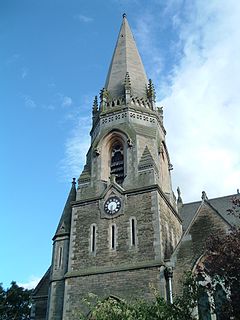Heworth, York
| Heworth | |
|---|---|
 Holy Trinity Church, Heworth |
|
| Heworth shown within North Yorkshire | |
| Population | 13,725 (ward. 2011) |
| OS grid reference | SE619530 |
| Unitary authority | |
| Ceremonial county | |
| Region | |
| Country | England |
| Sovereign state | United Kingdom |
| Post town | YORK |
| Postcode district | YO31 |
| Dialling code | 01904 |
| Police | North Yorkshire |
| Fire | North Yorkshire |
| Ambulance | Yorkshire |
| EU Parliament | Yorkshire and the Humber |
| UK Parliament | |
Heworth is part of the city of York in North Yorkshire, England, about 1 mile (1.6 km) north-east of the centre. It is sometimes referred to as Heworth Village. The name "Heworth" is Anglo-Saxon and means a "high enclosure".
Housing in Heworth varies from terraced houses along East Parade towards Layerthorpe, through large Victorian villas on Heworth Green, to older houses in Heworth village and the 1830s Elmfield Villa, home to Elmfield College and 1930s semi-detached houses on Stockton Lane.
Heworth has seen lots of modern suburban development, particularly in the outlying area of Heworth Without.
Heworth splits into two wards for the purposes of local elections—Heworth (including all land within the old city boundary) and Heworth Without (outside the old city boundary). Heworth Holme is a popular open space near Heworth village.
The population of the Heworth Ward at the 2011 Census was 13,725.
In recent years there has been an increasing tendency for estate agents to describe properties in the less desirable areas of Layerthorpe, Burnholme and Tang Hall as being in the more desirable Heworth causing some confusion about the extent of the area.
A number of bus routes serve the settlement.
Very little is known about the prehistoric history of the Heworth area, some researchers believe the area was largely boggy land. The village is of Roman origin and two Roman cremation cemeteries have been found in the area. Heworth Green, the road from York city centre to the village, is on the site of a Roman road.
During the early Medieval period, contemporary burials took place in a similar area to the Roman ones; this was during the 5th and 6th centuries. However, evidence for settlement in Heworth during this period of time still remains minimal.
...
Wikipedia

